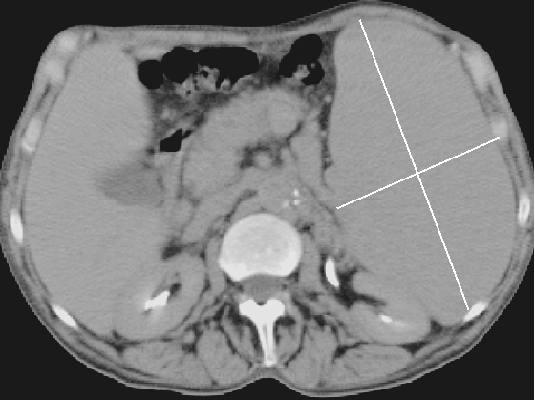An enlarged spleen, medically referred to as splenomegaly, is a condition where the spleen increases in size beyond its normal dimensions. The spleen plays an essential role in the body’s immune system and blood filtration processes. When it becomes enlarged, it can disrupt these functions and lead to various health complications. Understanding this condition, including its causes, symptoms, diagnostic methods, and care strategies, is crucial for managing it effectively.

Understanding the Spleen and Its Functions
The spleen is a small organ located in the upper left part of the abdomen, beneath the rib cage. Despite its modest size, it performs several vital roles:
- Blood Filtration: It removes old or damaged red blood cells and filters out harmful substances from the bloodstream.
- Immune Response: The spleen produces white blood cells that help fight infections and diseases.
- Blood Storage: It stores extra blood that can be released during times of need, such as when there is significant blood loss.
When the spleen enlarges, it may not perform these functions efficiently, leading to potential health issues.
Common Causes of an Enlarged Spleen
Several factors can contribute to the enlargement of the spleen. These include:
Infections
Viral, bacterial, and parasitic infections are common culprits behind an enlarged spleen. Some notable examples include:
- Mononucleosis: A viral infection caused by the Epstein-Barr virus, often leading to spleen enlargement.
- Bacterial Infections: Conditions like endocarditis, which affects the heart valves, can cause the spleen to swell.
- Parasitic Infections: Diseases such as malaria can also result in an enlarged spleen.
Liver Diseases
Conditions affecting the liver, such as cirrhosis, can lead to increased pressure in the veins that carry blood to the liver. This pressure can cause the spleen to enlarge as it tries to compensate for the impaired blood flow.
Blood Disorders
Certain blood-related conditions are closely associated with an enlarged spleen. These include:
- Hemolytic Anemia: A condition where red blood cells are destroyed faster than they can be replaced.
- Leukemia: A type of cancer that affects the blood and bone marrow.
- Lymphoma: A cancer that originates in the lymphatic system.
Metabolic Disorders
Some metabolic disorders, such as Gaucher’s disease and Niemann-Pick disease, can lead to spleen enlargement due to the accumulation of certain substances within the organ.
Trauma
Injuries to the spleen, whether from accidents or physical trauma, can cause swelling and enlargement.
Symptoms of an Enlarged Spleen
While some people with an enlarged spleen may not experience noticeable symptoms, others may encounter the following signs:
- Pain or fullness in the upper left side of the abdomen, sometimes extending to the left shoulder.
- Fatigue and weakness due to reduced red blood cell count.
- Frequent infections resulting from compromised immune function.
- Anemia, characterized by paleness and shortness of breath.
- Bleeding easily, as the spleen may affect platelet levels.
Diagnosing an Enlarged Spleen
Diagnosing an enlarged spleen typically involves a combination of physical examinations, imaging tests, and laboratory analyses.
Physical Examination
A healthcare provider may detect an enlarged spleen during a routine physical examination by palpating the abdomen. If the spleen feels larger than usual, further tests will likely be recommended.
Imaging Tests
Several imaging techniques can confirm the presence of an enlarged spleen:
- Ultrasound: Uses sound waves to create images of the spleen and other abdominal organs.
- Computed Tomography Scan: Provides detailed cross-sectional images of the abdomen.
- Magnetic Resonance Imaging: Offers high-resolution images to assess the spleen’s size and condition.
Blood Tests
Blood tests can reveal abnormalities that may indicate an underlying cause for spleen enlargement. These tests include:
- Complete blood count to check for anemia, low platelets, or abnormal white blood cell levels.
- Liver function tests to evaluate the health of the liver.
- Infectious disease screenings to identify potential infections.
Treatment and Care for an Enlarged Spleen
Treatment for an enlarged spleen primarily focuses on addressing the underlying cause rather than the spleen itself. Depending on the diagnosis, treatment options may include:
Medications
Antibiotics or antiviral drugs may be prescribed if an infection is responsible for the enlargement. For blood disorders, medications that target the specific condition might be used.
Lifestyle Modifications
Adopting healthy habits can support overall health and reduce strain on the spleen:
- Avoiding contact sports or activities that could result in abdominal injury.
- Eating a balanced diet rich in nutrients to support immune function.
- Staying hydrated and getting adequate rest to promote recovery.
Surgical Intervention
In severe cases where the spleen is significantly enlarged or causing complications, surgical removal, known as a splenectomy, may be necessary. While this procedure can alleviate symptoms, it also increases the risk of infections, so patients must take precautions afterward.
Monitoring and Follow-Up
Regular follow-up appointments with a healthcare provider are essential to monitor the spleen’s size and ensure that the underlying condition is being managed effectively.
Preventing Complications
Managing an enlarged spleen involves not only treating the root cause but also preventing potential complications. Some key strategies include:
- Protecting the abdomen from injuries to avoid rupture of the spleen.
- Staying up-to-date with vaccinations to reduce the risk of infections.
- Seeking prompt medical attention for any new or worsening symptoms.
Living with an Enlarged Spleen
While living with an enlarged spleen can present challenges, understanding the condition and adhering to recommended treatments can improve quality of life. Patients should maintain open communication with their healthcare providers and actively participate in their care plans to achieve the best possible outcomes.





